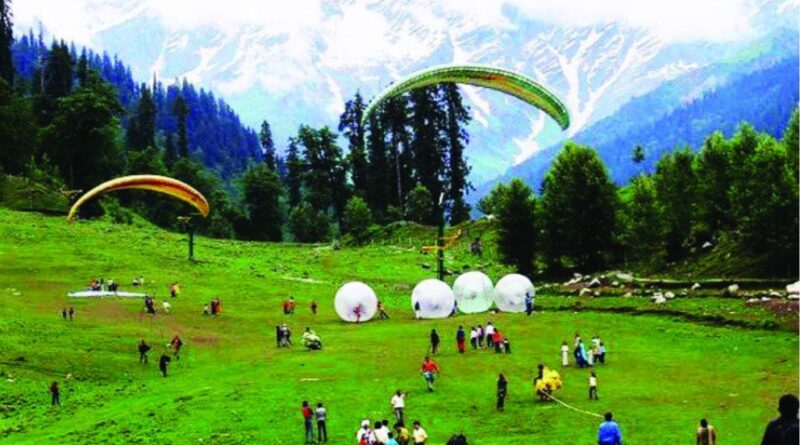Himachal Govt to develop 77 New Eco-tourism sites across State
The Government of Himachal Pradesh has launched a comprehensive initiative to promote eco-tourism across the state. Under the leadership of Chief Minister Thakur Sukhvinder Singh Sukhu, a new Eco-Tourism Policy has been introduced to develop 77 eco-tourism sites within various forest circles. This initiative is projected to generate ₹200 crore in revenue over the next five years, aiming to attract tourists while preserving the environment, creating local employment, and fostering sustainable economic growth.
Renowned for its snow-capped peaks, dense forests, pristine rivers, and rich biodiversity, Himachal Pradesh has long been a haven for nature lovers. The new policy seeks to harness this natural beauty responsibly. Eco-tourism, which emphasizes travel that minimizes environmental impact, is at the heart of this vision. The Eco-Tourism Policy 2024 is designed to balance tourism development with ecological preservation.
The 77 eco-tourism sites span key regions such as Shimla, Kullu, Mandi, Bilaspur, Rampur, Solan, Nahan, Hamirpur, Nalagarh, Dharamshala, Palampur, Chamba, Dalhousie, Nurpur, and Rekong Peo. Operators have already been appointed for seven prominent locations, including Potter Hill and Shoghi in Shimla, Solang Nallah in Kullu, and Kasol in the Parvati Valley. The remaining sites are being developed in phases. Tourists will be able to enjoy eco-friendly activities such as trekking, bird watching, forest camping, jungle walks, homestays, and nature interpretation trails.
A key feature of this initiative is community involvement. Eco-tourism committees have been established in each forest circle to oversee the projects. Local youth are being trained as nature guides and multi-purpose workers. So far, over 70 guides and 135 workers have been trained by the Himachal Pradesh Eco-Tourism Society (HPECOSOC), creating job opportunities while promoting environmental stewardship.
To enhance accessibility, the government has digitized eco-tourism services. More than 100 forest rest houses and campsites can now be booked online via the HPECOSOC website. A trekking management system has been introduced, with over 245 routes categorized by difficulty. A dedicated mobile app is also in development to assist tourists.
The policy aligns with national guidelines set by the Ministry of Environment, Forest and Climate Change (MoEF&CC) and the amended Forest Conservation Act (2023). Eco-tourism chapters in the working plans of forest divisions such as Shimla, Palampur, Kullu, Seraj, and Mandi have already received approval.
These efforts are yielding positive results. In 2024, Himachal Pradesh welcomed over 18.12 million tourists, including 82,000 international visitors—a 13.24% increase from the previous year. With tourism contributing 7.78% to the state’s Gross State Domestic Product (GSDP), the new policy is expected to further strengthen the economy.
In just two and a half years, the current administration has laid a strong foundation for eco-tourism. By protecting the environment and empowering local communities, Himachal Pradesh is emerging as a model for sustainable tourism. This initiative marks a significant step toward a greener, cleaner, and more self-reliant future for the state.



